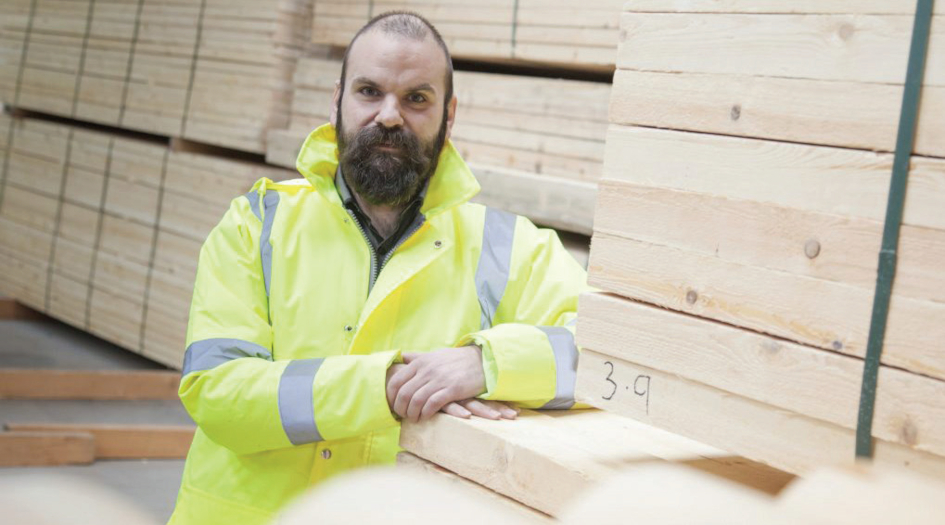When density is a superhero
28 May 2021Dr Athanasios Dimitriou, research scientist at The Biocomposites Centre, Bangor University discusses the virtues of densified wood
Wood is an excellent material with great mechanical properties all thanks to its cellular structure. A complex bundle of longitudinal pipe-like cells, which are mainly used by the tree to transfer essential substances from the root system to the canopy, are efficient structural members providing advanced mechanical properties to the tree. The wood cells consist of a complex combination of different cellular layers mainly made up of cellulose, lignin and hemicellulose. Orientation of strong cellulosic microfibrils creates a very strong cellular wall around the cell lumen. As a matter of fact, the lumen, which is the spaces within the cells, or ‘void volume’ within wood, can make up more than 40% of the total wood volume. All of this gives a very high strength to weight ratio.
What would happen if we can remove these voids from the wood cells and take advantage of only the lignocellulosic structure of wood? The answer is a material with much higher density and altered mechanical properties. But how can we reduce the voids within the wood cells without damaging the lignocellulosic structure which provides the mechanical properties? The solution to this has actually been known for centuries. The combination of high temperature and moisture has been used for hundreds of years to bend and compress wood for forming furniture elements, for example ‘steam bending’. The high temperature and moisture cause the wood polymers to reach their glass transition state allowing the wood cells to be compressed without incurring any damage. If we compress the wood in a radial direction under the glass transition conditions, we can flatten the cells and therefore reduce the lumen voids.
This process is called densification of wood and it has been known since the 1900s when the first patents were published. It is seeing a resurgence of interest for modern applications. Densified wood has exhibited incredible increases in mechanical properties, especially hardness, sometimes being 200% higher than untreated wood. However, densified wood can tend to spring back to its normal state when exposed to moisture and heat, resulting in an excessive swelling. It seems that hemicellulose and lignin are responsible for the “shape memory effect” of densified wood causing the spring back. Therefore, newer processes like closed system hydrothermal treatments can break the lignin and hemicellulose polymeric chains and rejoin them into their new compressed positions, almost eliminating the spring back effect. Heat and hydrothermal treatment can cause a reduction in mechanical properties of wood but the reduction seen for hydrothermal treated densified wood can be smaller than the gains in properties from the densification, giving material that is still superior to the untreated wood.
To tackle the spring back effect without affecting the mechanical properties, techniques like partial delignification prior to densification has been introduced with excellent results. The partial removal of lignin and hemicellulose allowed the wood cells to be compressed even further, bringing the cellulose nanofibres closer, promoting the creation of new hydrogen bonds that resist the spring back effect. Other approaches to reduce the spring back effect were to incorporate resins that cure during the compression state to resist the memory effect. There are commercially available densified wood products that use thin veneers impregnated with resin and compressed under heat to provide dimensional stability. These products are characterised by high density, improved mechanical properties and low water swelling. The partially delignified and the hydrothermal treated approach for densified wood veneers to produce stable high strength plywood products has been a point of interest. This could reduce the amount of resin needed to suppress the spring back effect resulting in a more environmentally friendly product.
Some people describe densified wood as “super wood” with mechanical properties that can exceed steel. Others have the vision of seeing these products replacing metal fixings in construction, or even further used in the aerospace and car industries. Whichever the case might be for the future of these products, it is definitely a very interesting area of research and with the better understanding we have now about wood stabilisation, the development of such environmentally friendly products could be close to becoming reality.
